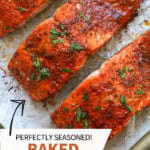Baked Salmon Recipe (Perfect Seasoning!)
Baked salmon is an easy weeknight dinner idea that turns out perfectly flaky and tender. The seasoning blend will make you crave it every week!
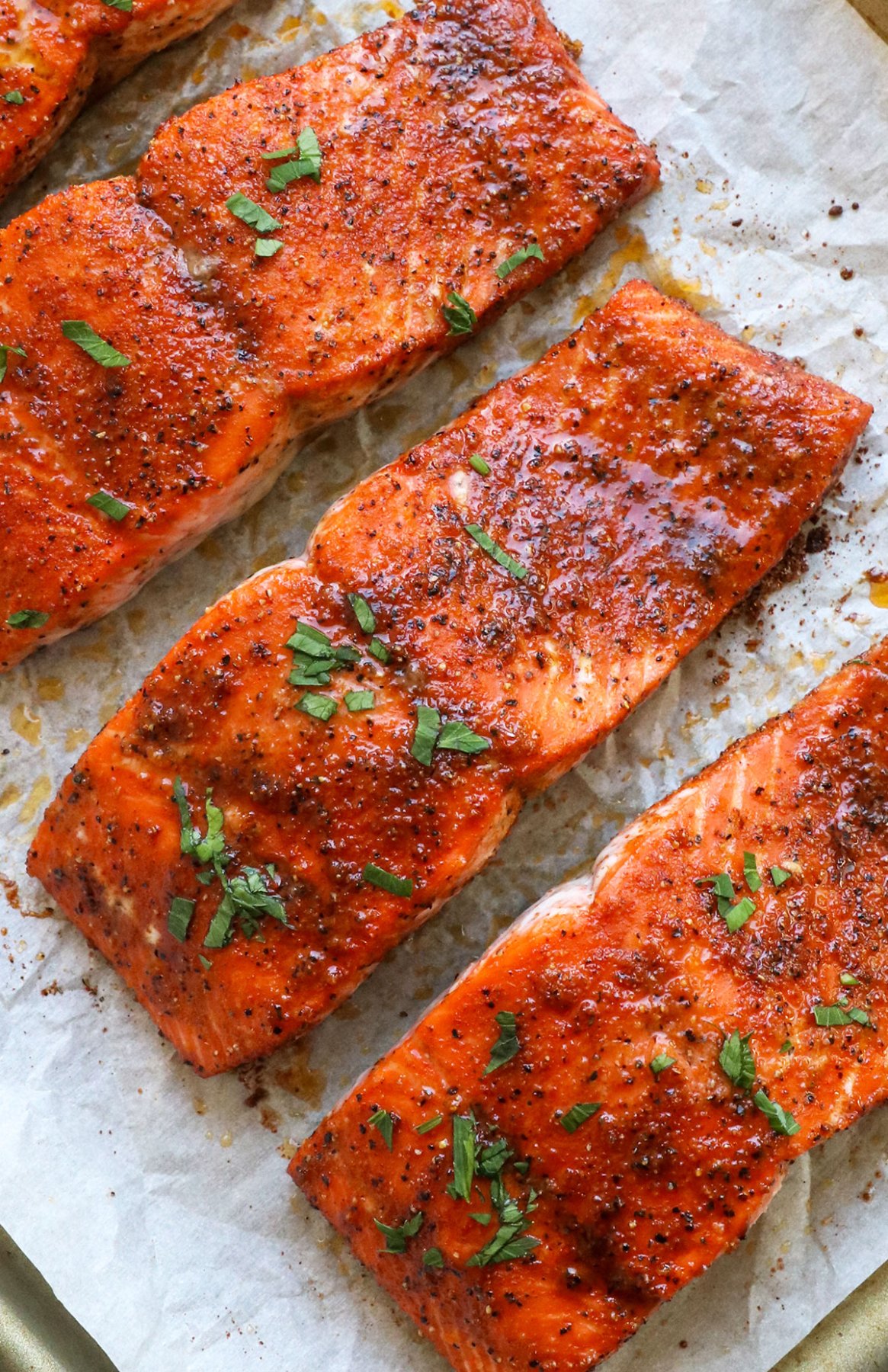

Ingredients You’ll Need
This baked salmon recipe is quick to prepare and uses simple pantry spices. A blend of garlic powder, smoked paprika, coconut sugar, salt, and black pepper will make your taste buds crave more.
Detoxinista Tip
If you’re nervous about adding a touch of sugar to the spice blend, you can omit it, but the salmon won’t be nearly as flavorful. The sweet and salty combo makes french fry seasoning, barbeque, and other popular rubs addictive. If you’d rather use honey, drizzle it with the olive oil during the first step.
I prefer to cook wild-caught salmon over farm-raised Atlantic salmon. Coho, Sockeye, and King salmon are usually wild-caught varieties, but check the labels when shopping.
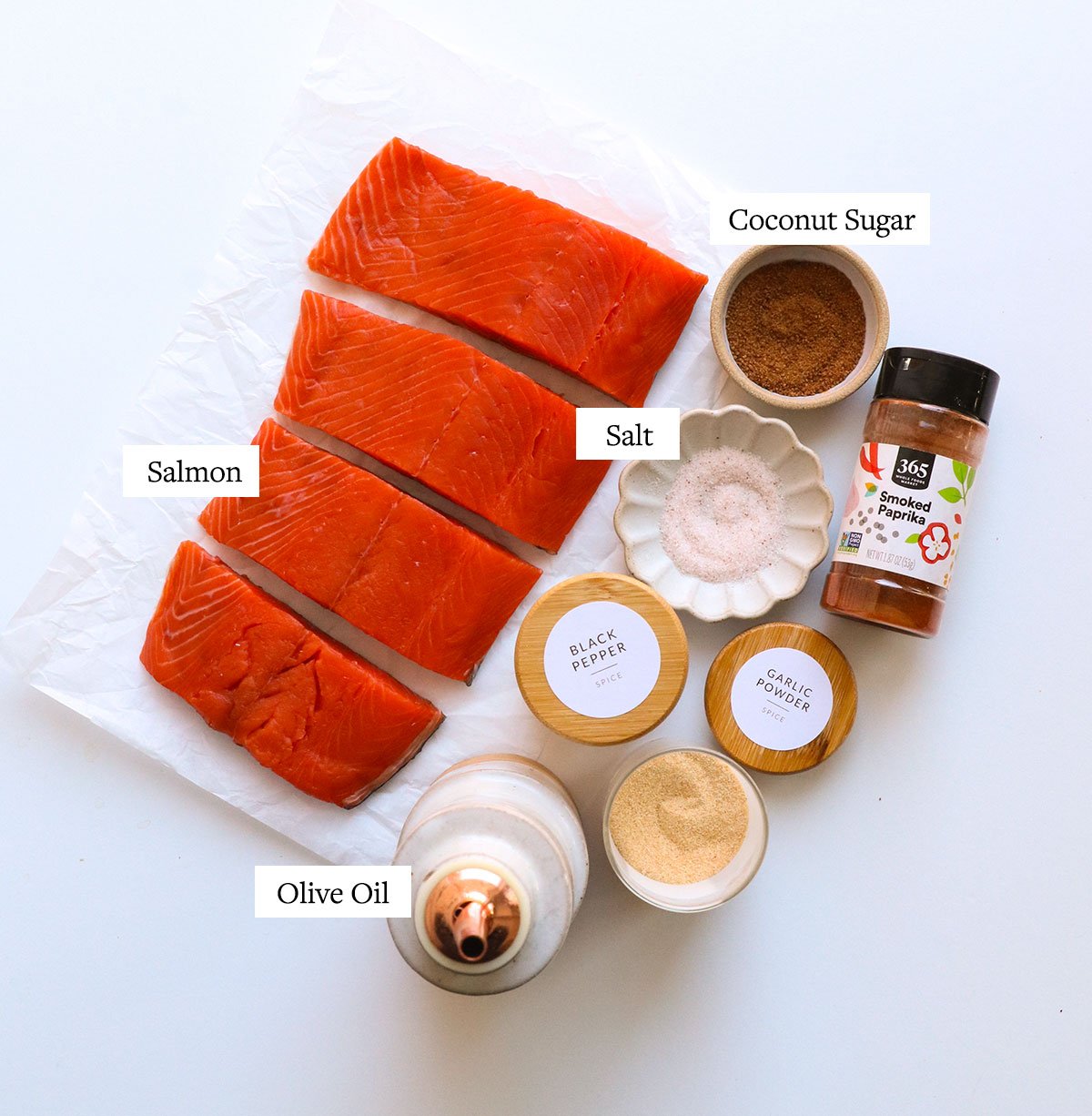

How to Bake Salmon Perfectly
Preheat your oven to 400ºF and line a large baking sheet with parchment paper. Your oven usually takes 15 to 20 minutes to preheat fully. Make sure you give it enough time to reach the proper temperature.
If your salmon is not cut into fillets, slice it into 4- to 6-ounce portions. This recipe assumes you’ll have about 1 pound of salmon to season, but a little more than that will also work.
If your fillet is less than 1-inch thick in the thickest area, it may cook faster than directed, so check on it when baking.
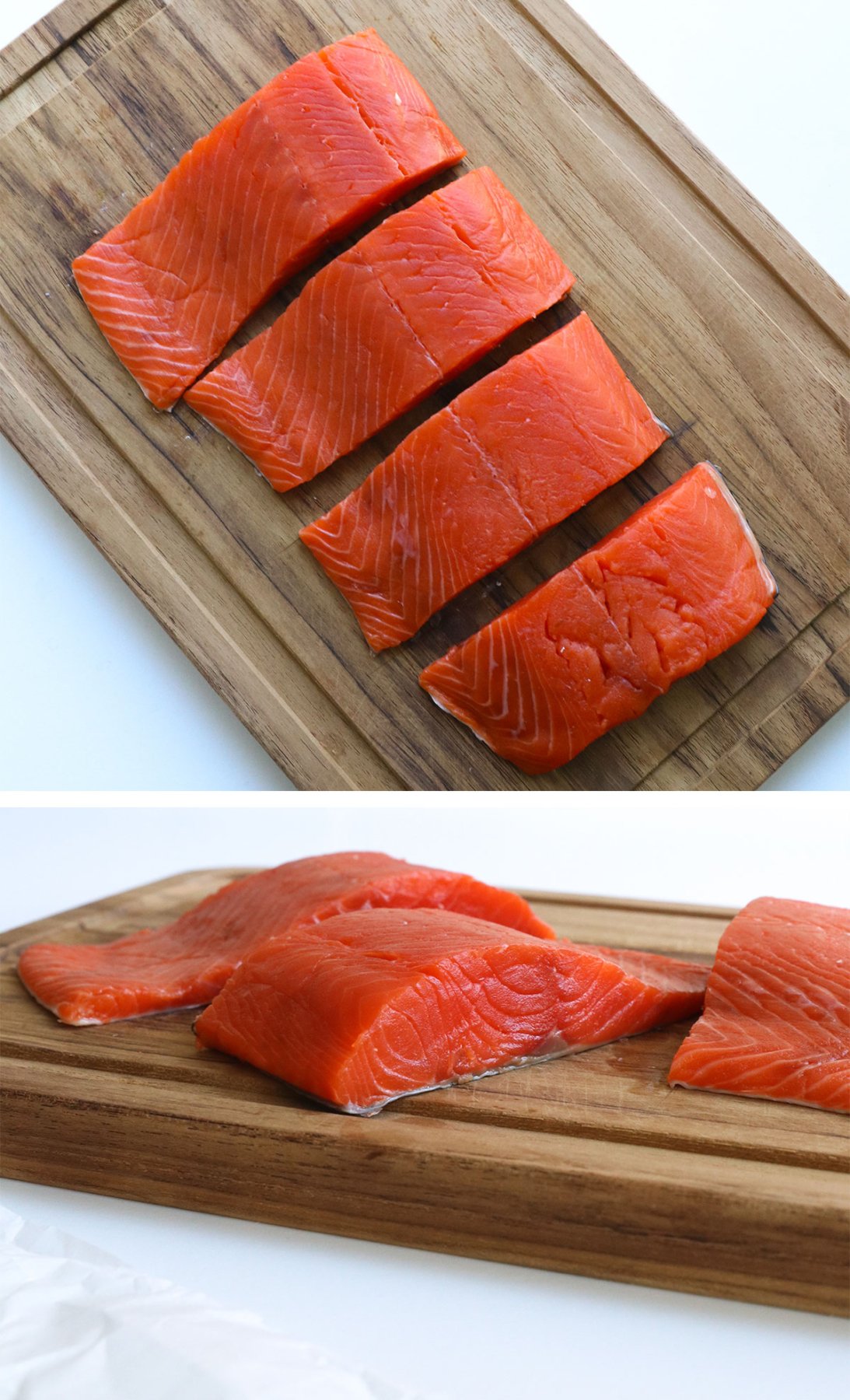

In a small bowl, combine:
- 1/2 teaspoon garlic powder
- 1/2 teaspoon smoked paprika
- 2 teaspoons coconut sugar
- 3/4 teaspoon salt
- 1/4 teaspoon black pepper
Stir well to create the best salmon seasoning. If you keep brown sugar or white sugar on hand, that will work as a swap for the coconut sugar. Or, use a drizzle of honey instead.
(If needed, omit the sweetener for a sugar-free/low-carb option.)
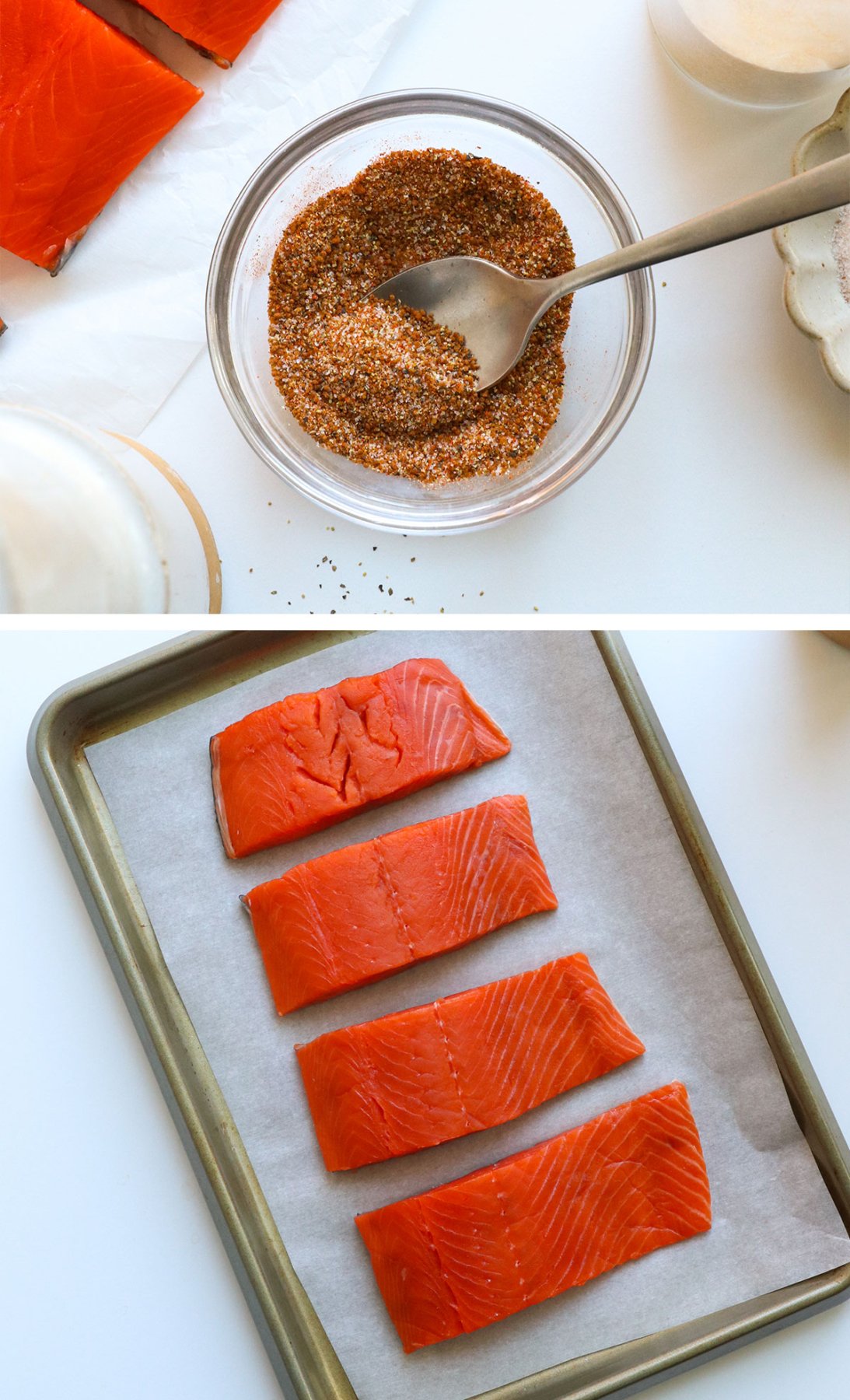

Arrange the salmon fillets skin side down on the parchment-lined sheet pan, leaving at least 2 inches between each piece.
Drizzle the salmon with olive oil and brush it evenly over the top and sides of the fish.
Sprinkle the seasoning blend evenly over the salmon fillets. Use your hands to rub the seasoning onto the sides of the fish, too. (There is no need to season the skin side, though.)
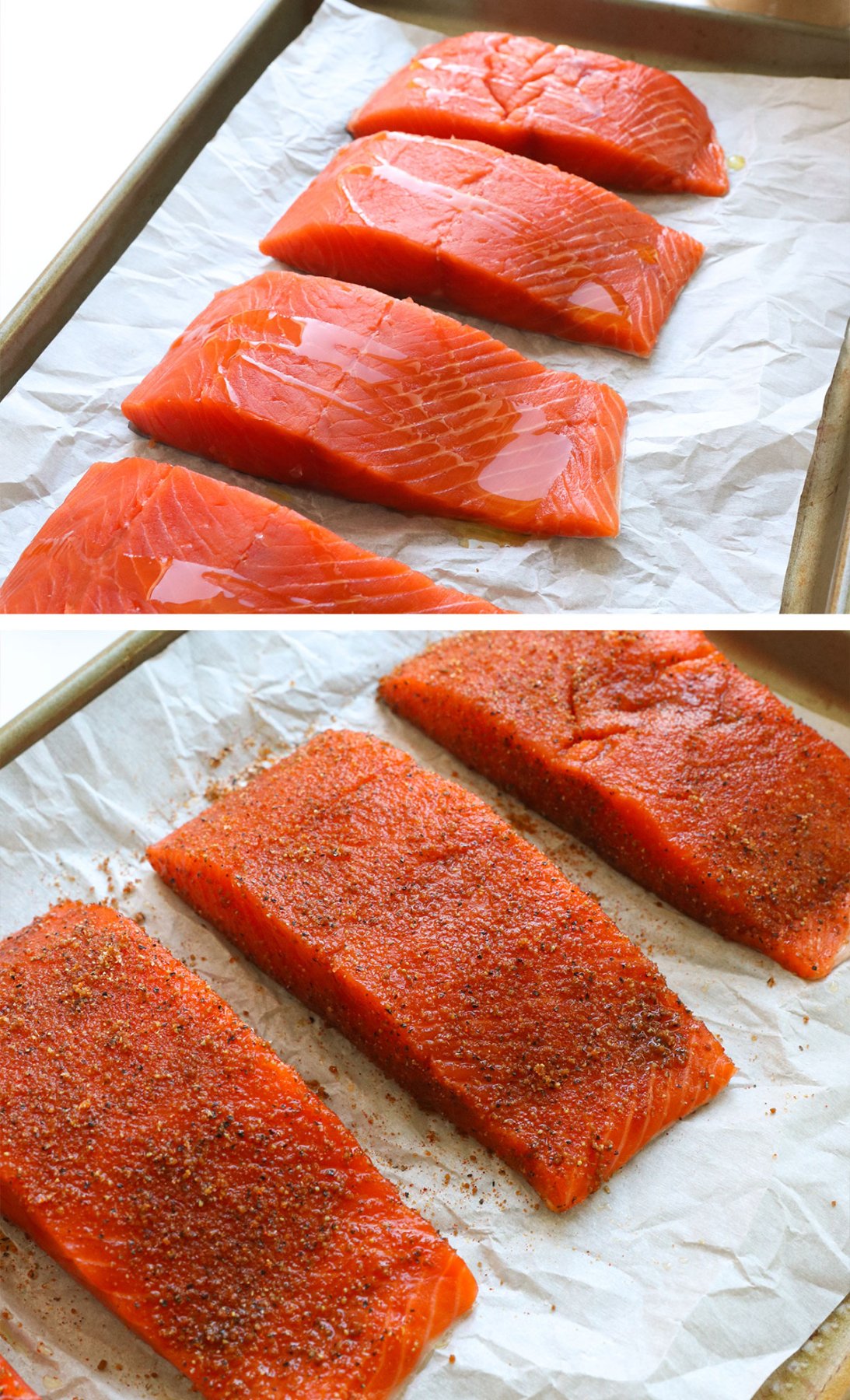

Place the pan of seasoned salmon on the top rack of your oven. If your salmon is on the thinner side (1-inch at the thickest part or less), set a timer for 12 minutes.
If your salmon is more than 1-inch thick, it’s likely to cook in about 15 minutes.
Detoxinista Tip
Salmon cooking time can vary depending on thickness and how cold it is from the fridge. If your salmon came to room temperature while doing prep work, you may want to start with 10 minutes to ensure it doesn’t overcook.
When the timer goes off, use an instant-read thermometer to test the internal temperature of the salmon in the thickest part. The USDA suggests that salmon should be cooked to 145ºF, but many people may find the texture too dry at that temperature.
My favorite texture for salmon is when it reaches 130ºF. Then, I let it rest for 5 minutes on the pan for additional carry-over cooking. (This means the fish will reach a slightly higher temperature as it rests.)
If you don’t have an instant-read thermometer, another way to check your fish is to see if it flakes easily with a fork and looks opaque in the center.
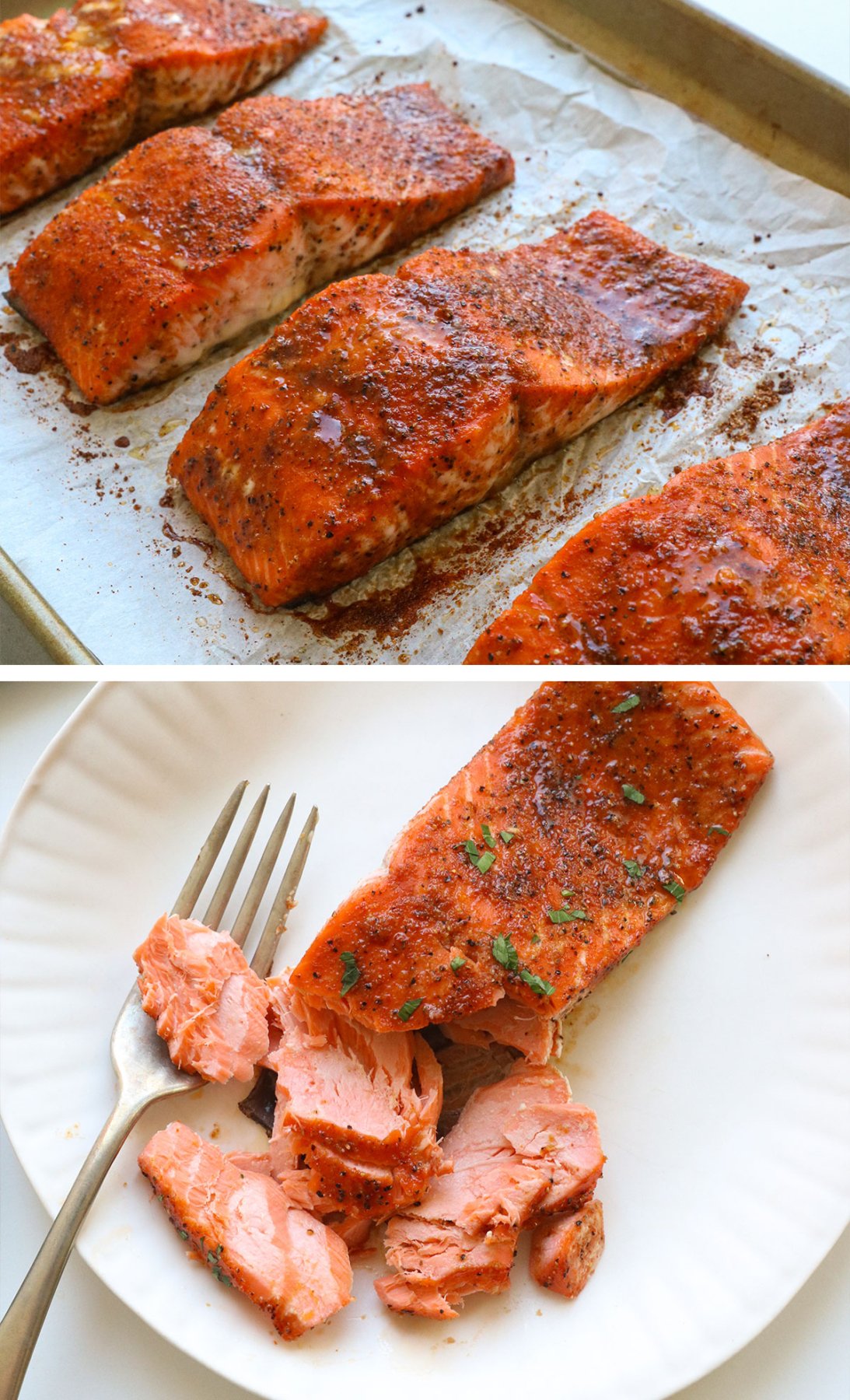

Serve baked salmon warm with fresh parsley sprinkled on top, if you like. This fish pairs well with almost any side dish, like cooked rice, roasted potatoes, and broccoli.
Leftovers can be stored in an airtight container for 3 to 4 days.
Looking for more easy protein recipes? Try Air Fryer Salmon Bites, Baked Chicken Breasts, or Crispy Baked Tofu for more ideas.
- 4 salmon fillets (about 4 to 6 oz. each)
- 1 tablespoon olive oil
- ¾ teaspoon fine sea salt (see notes)
- ½ teaspoon garlic powder
- ½ teaspoon smoked paprika
- 2 teaspoons coconut sugar
- ¼ teaspoon ground black pepper
-
Preheat the oven to 400ºF and line a rimmed baking sheet with parchment paper. Arrange the salmon fillets skin-side-down on the parchment paper about 2 inches apart from each other.
-
Drizzle the fish with olive oil and rub it evenly over the top and sides. In a small bowl, combine the salt, garlic powder, smoked paprika, coconut sugar, and black pepper. Stir well, then sprinkle the seasoning blend over each fillet. Coat the fish generously, rubbing it on the top and sides of the fish. (No need to season the bottom.)
-
Bake at 400ºF for 12 to 15 minutes. Use an internal thermometer to check the thickest part of the fish. The FDA recommends cooking fish to 145ºF, but I prefer to remove it from the oven at 130ºF. The fish will continue to cook slightly when you remove it from the oven, thanks to carry-over cooking. (You can also test the fish without a thermometer simply by flaking the center with a fork. If it looks opaque and flakes easily, it’s done!)
-
Let the salmon rest on the pan for at least 5 minutes after removing it from the oven. Then it’s ready to serve! (Feel free to garnish with fresh parsley or other herbs, if you like.) Leftovers can be stored in an airtight container in the fridge for up to 2 days.
Salmon Note: The temperature of your salmon can affect the cooking time. If it’s cold from the fridge, it may require a longer cooking time. If it’s been sitting out at room temperature for a while, it may cook faster. (Thickness is also something to watch for; thin salmon could cook as fast as 10 minutes.) I prefer using wild-caught salmon, like Coho and Sockeye. (King salmon is also available wild-caught, but it’s pricey!)
Salt Note: I always use Real Salt brand, which is an unrefined mineral salt. Use the same salt if you want the same flavoring. Table salt will taste different, so start with less if you’re using a different variety.
Calories: 281kcal | Carbohydrates: 2g | Protein: 34g | Fat: 14g | Saturated Fat: 2g | Polyunsaturated Fat: 5g | Monounsaturated Fat: 6g | Cholesterol: 94mg | Sodium: 515mg | Potassium: 845mg | Fiber: 0.2g | Sugar: 1g | Vitamin A: 192IU | Vitamin C: 0.01mg | Calcium: 22mg | Iron: 1mg
If you try this Baked Salmon recipe, please leave a comment and star rating letting me know how you like it.


